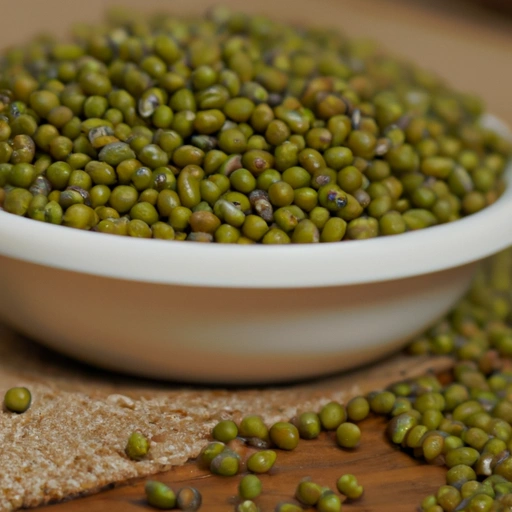Mung Bean
Description

The mung bean, also known as green gram, moong, or Vigna radiata, is a plant species in the legume family. It is a small, round, green bean that is native to the Indian subcontinent. It has been cultivated since ancient times and is now widely used across Asia, and increasingly popular in the American and European culinary scenes. Mung beans can be used whole, split with skins on or off, or ground into flour, making them incredibly versatile in a range of recipes.
Common uses
Mung beans are commonly used in salads, soups, stews, and stir-fries. They are also sprouted to make bean sprouts, which are a crunchy addition to sandwiches, salads, and noodle dishes. In addition, mung beans are ground into flour to make noodles, pancakes, and crepes. They can also be boiled, mashed, and sweetened to create desserts and sweet pastes used in Asian confections.
Nutritional value
Calories
One cup (202g or about 7.1 oz) of cooked mung beans contains approximately 212 calories.
Protein
This same serving size has about 14.2 grams (0.5 oz) of protein, making it a great plant-based protein source.
Fat
Mung beans are low in fat, with only 0.8 grams (about 0.03 oz) per cup of cooked beans.
Carbohydrates
They are also high in carbohydrates, providing around 38.7 grams (1.4 oz) per serving.
Vitamins
Mung beans are a good source of B vitamins, particularly vitamin B9 (folate), and also contain vitamin C.
Minerals
They are rich in minerals such as potassium, magnesium, iron, and phosphorus.
Health benefits
Mung beans are known for their health benefits, including aiding in digestion due to their high fiber content, helping control blood sugar levels, and possibly reducing the risk of heart disease. Their protein and nutrient density also make them a beneficial food for vegetarians and vegans looking to increase their protein intake.
Potential risks
While mung beans are generally considered safe for most people, they do contain oligosaccharides, which can cause gas and bloating in some individuals. People with gout or kidney stones may also want to limit their intake due to the beans' moderately high purine content.
Common recipes
Common recipes featuring mung beans include dal in Indian cuisine, mung bean soup in Chinese cuisine, and mung bean pancakes in Korean cuisine. They are also used in Filipino desserts like halo-halo and in Thai ice creams.
Cooking methods
Mung beans can be boiled, steamed, or stewed. They are also suitable for sprouting, which is a common method to consume them raw or lightly cooked.
Pairing with other ingredients
They pair well with a variety of flavors, including garlic, ginger, cumin, coriander, and coconut milk. Mung beans also complement rice, bread, and vegetables.
Summary
The mung bean is a versatile and nutritious legume that is growing in popularity across the globe. Its ability to be used in a multitude of culinary applications, from savory dishes to sweet desserts, makes it a valuable ingredient in a diverse array of recipes. With its numerous health benefits and relatively low risk of adverse effects, it's an excellent addition to any diet.